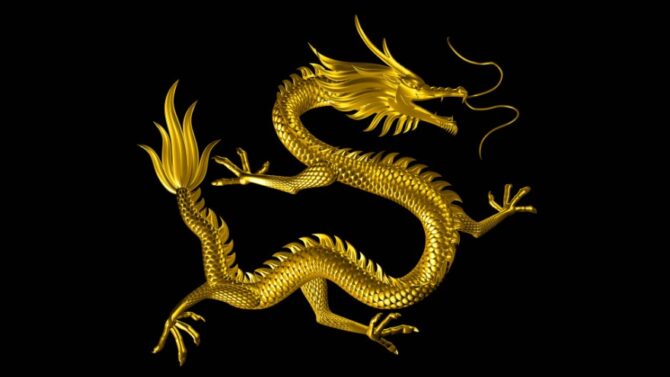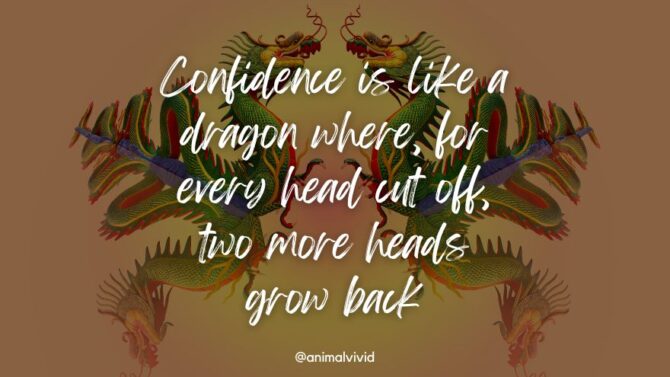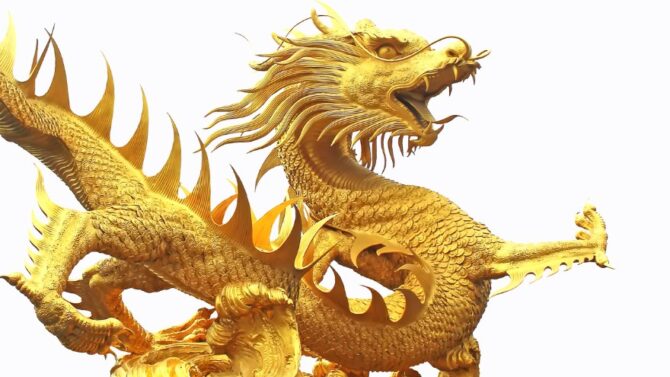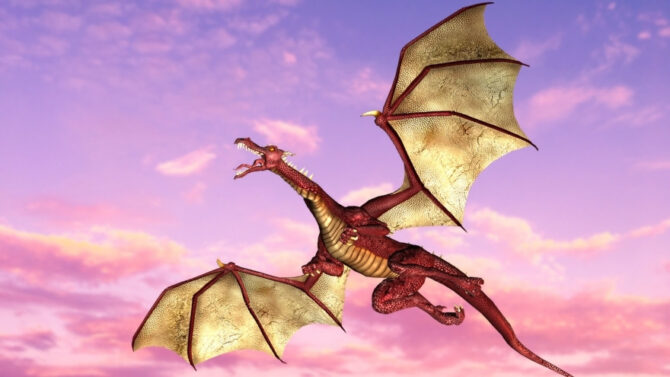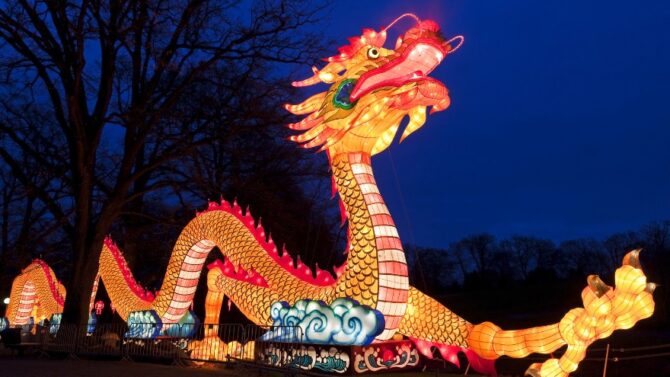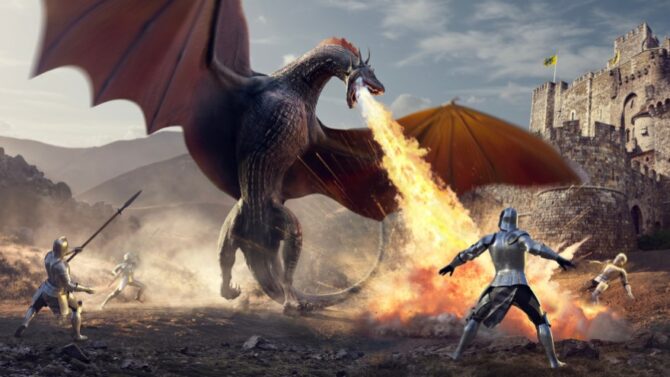Eastern cultures have a wide room for dragons. While the Chinese dragon is the most common, other Asian countries feature dragons in their legends and myths.
Their looks, abilities, and reputation differ significantly from the western dragons’ conception, which adds to their uniqueness.
Asian dragons mainly regroup creatures from China, Korea, Vietnam, and Japan.
There are some differences and a lot of overlap between them.
History of Asian Dragons
China
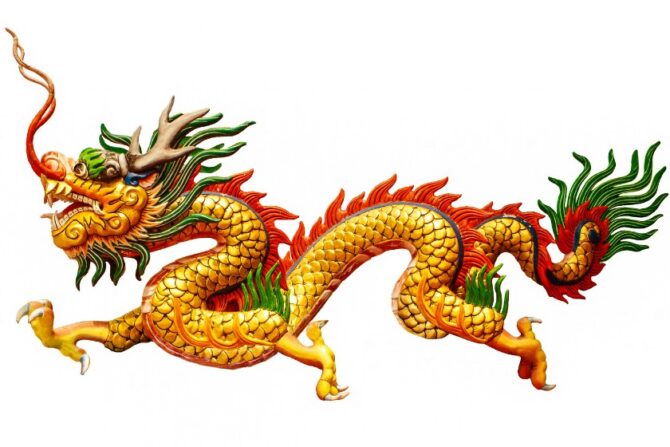
The first step to explore is Chinese culture. Far from being confined to myths, dragons are integrated into society.
This creature is one of the zodiac animals, displayed in festivals, pictured on cards, and designed on clothes.
In ancient times dragons were associated with emperors, and it was considered illegal for a common man to have a dragon symbol.
This association began with Huangdi, the legendary tribal leader who united China and formed the first dragon totem.
He was also called the Yellow Emperor. During the Han dynasty, emperors began adopting the name no”sons of the dragon.”
This explains why the Chinese people call themselves “descendants of the dragon.”
Vietnam
The next country is Vietnam. The Vietnamese culture holds dragons in high regard, just like the Chinese.
According to a myth, the Vietnamese people descended from a dragon and a fairy.
The dragon was named Lac Long Quân, who married a fairy goddess named Âu Cò.
The latter laid 100 eggs, which turned into 100 sons, the first of Vietnam humans.
Following the footsteps of China, Vietnamese dragons represent the emperor, which stands for power.
It also represented prosperity and rain for the agricultural people.
Another symbol the Vietnamese dragon represented is the yang which stood for life, universe, existence, and growth. The Chinese dragon represents this too.
Korea
Korean dragons have ties with the Chinese, which you can easily prove from their looks.
Their reputation is also positive. Korean dragons are benevolent beings that could control rain and clouds.
These creatures are intelligent and capable of showing complex emotions. They display kindness, devotion, and even gratitude.
This isn’t unique, as even some western dragons show emotion, but it is special nonetheless.
According to myths, Korean dragons were first classified as imugis, the lesser dragons, before turning into full-fledged dragons.
They are often portrayed with beards, a trait the Chinese dragon doesn’t have.
They also carry around a ball known as the yeouiju.1
To show how dragons were seen as important, a legend has it that King Munmu died wishing to become a dragon.2
The Japanese dragon is borne out of stories from China, Korea, and India.
As such, it is influenced by these other cultures, especially the Chinese.
They had the same long, and serpentine looks as other eastern dragons. They could also control the rain and water.
Some examples of Japanese dragons are the Yamata no orochi, the Watatsumi, Toyotama-hime, Wani, Raijū, and the Kiyohime.
Significance of Asian Dragons
There may be variations in how each culture presents dragons, but there are similarities, especially in the significance.
What do Asian dragons signify? Here they are:
Weather
Many Asian dragons were considered to be in control of the weather. In an agricultural society, this is expected.
The dragons could bring rainfall, manipulate waters, and often live around aquatic regions.
When rainfall is scarce, many Asians of old would appease the dragons to get rain.
This ability also links them to prosperity.
Emperor
Emperors in Asia were powerful, and their symbol of power was the dragon.
Due to their regal nature, dragons represented power, which fits the emperor’s ultimate goal of displaying his rule.
Many also tied their identity to these creatures. An example is the Chinese emperors called sons of dragons.
Yang symbol
The yin-yang philosophy is prevalent in eastern societies and describes “complementary forces that make up all aspects and phenomena of life.”3
Yin symbolizes feminine forces, while the yang symbolizes masculine forces.
The dragon represents yang, while the tiger stands for yin.
Eastern Dragons vs. Western Dragons
With a few exceptions, the primary view of dragons among easterners is that they are good.
Dragons represented many positive qualities like rain, prosperity, and power.
Like humans, they are subject to mood changes and should be appeased. They are noble creatures, even at that.
Western dragons are generally villains (with some exceptions to the rule).
They can take down armies and raid villages. The only way to handle a Western dragon is to either kill or capture it.
Movies like Game of Thrones portray dragons as wild beasts that can be tamed, but the prevalent view remains.
Another difference is in looks and size. Eastern dragons are smaller and serpentine and do not always have wings–though they can fly.
Western dragons are often more like dinosaurs than serpents, with large wings and fire-breathing abilities.
Dive Deeper: 10 Types Of Dragons In Ancient & Modern Folklore
Other Eastern Dragon Facts
- Eastern religious traditions like Buddhism, Taoism, and Confucianism all revere dragons and use them as symbols of strength and enlightenment.
- Many eastern dragons took different forms and could even take on a human shape.
- Dragons are so important in China; families plan pregnancies so they will be born in the year of dragons.
- Many places in China are named after dragons.
Final Thoughts
Eastern dragons are symbols of positivity, a trait many Western modern storytellers seem to incorporate in their rendition of dragons.
If you’ve only thought of dragons as fire-breathing monsters, this should help change your paradigm.
Eastern dragons show us another refreshing side of the mythical creatures.
References & Notes
- Yeouiju, Killer Instinct Wiki. Fandom
- King Munmu the Great, the Guardian of Silla. KBS WORLD.
- Yinyang, Definition, Meaning, & Facts. Britannica.
